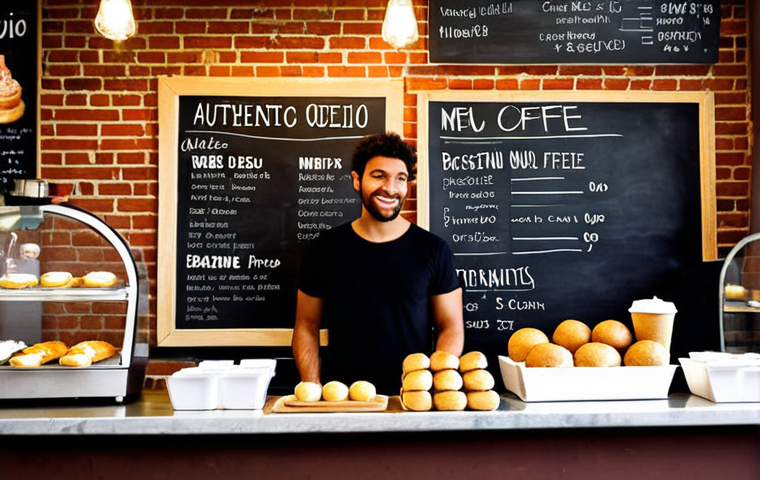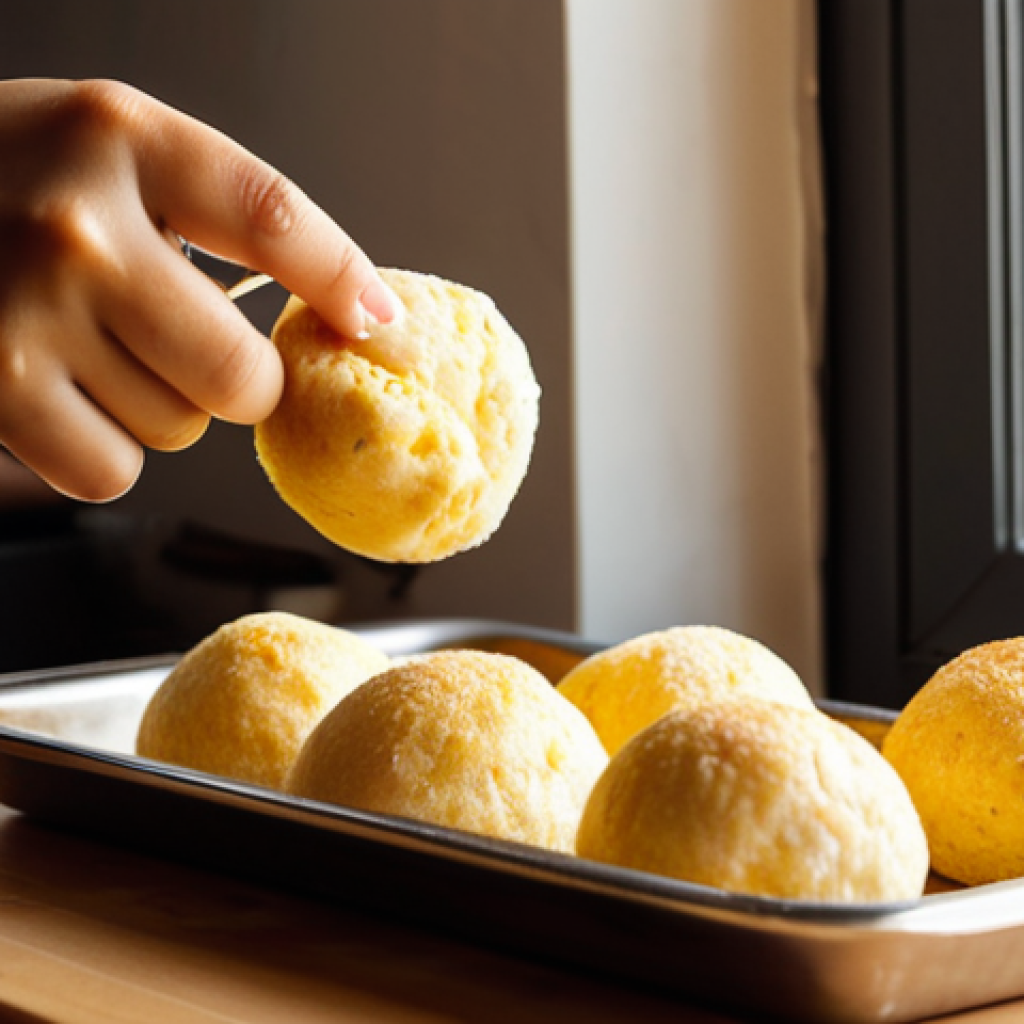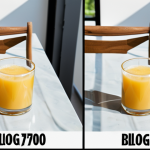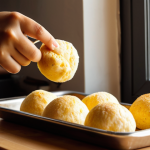Okay, here’s an intro about Pão de Queijo, tailored for a blog:Ever stumbled upon something so simple, yet utterly addictive? That’s Pão de Queijo, or Brazilian cheese bread, for you!
I remember the first time I tried one – the warm, chewy texture and the subtle cheesy tang just blew me away. Seriously, I couldn’t stop popping them!
It’s more than just a snack; it’s a little taste of Brazilian comfort food that’s been getting a ton of buzz lately. People are even experimenting with different cheeses and adding herbs to create their own unique twists.
It’s easy to see why this little gem is gaining worldwide popularity. Let’s dig in and explore everything you need to know about these amazing bites! Let’s delve deeper in the article below.
Okay, here is the blog post about Pão de Queijo:
The Magic Behind the Cheesy Delight

Pão de Queijo isn’t just bread; it’s an experience. Growing up, my Brazilian friend’s grandma used to make these every Sunday morning. The aroma alone was enough to get me out of bed!
The secret, she told me, was in the quality of the tapioca flour and the perfect blend of cheeses. It’s fascinating how such simple ingredients can create something so incredibly satisfying.
And trust me, once you nail the recipe, you’ll be making these all the time. I even started experimenting with different types of cheese – Gruyere and Parmesan gave it a really nice kick.
It’s all about finding what works best for your taste buds!
Tapioca Flour: The Unsung Hero
Understanding Tapioca Starch
Sourcing Quality Flour
Cheese Selection: More Than Just Mozzarella
Exploring Cheese Blends
The Importance of Quality Cheese
From Brazil to Your Kitchen: A Global Phenomenon
It’s amazing how a traditional Brazilian snack has made its way into cafes and kitchens worldwide. I’ve seen it pop up in hipster coffee shops in Brooklyn, gourmet food trucks in Austin, and even high-end restaurants in London!
And each place seems to have its own little twist on the recipe. Some add garlic powder, others use different herbs like rosemary or thyme. It just goes to show how versatile and adaptable this little cheese bread can be.
It’s not just a food trend; it’s a cultural exchange happening right in our kitchens.
The Rise in Popularity
Factors Contributing to Global Appeal
Adaptations in Different Cultures
Finding Authentic Recipes
Online Resources for Recipes
Considering Regional Variations
Baking Tips for Pão de Queijo Perfection
Getting that perfect Pão de Queijo texture – crispy on the outside and chewy on the inside – can be tricky, but it’s totally achievable with a few key tips.
One thing I learned the hard way is the importance of preheating your oven properly. You want it hot, hot, hot! Also, don’t be afraid to experiment with baking times.
Every oven is different, so keep an eye on them and adjust accordingly. And remember, fresh is always best. These are best enjoyed straight out of the oven, when they’re still warm and gooey.
Trust me, it’s worth the effort!
Oven Temperature and Baking Time
Preheating for Optimal Results
Monitoring Baking Time
Achieving the Perfect Texture
The Role of Moisture
Tips for Chewy Interiors
Beyond the Basics: Creative Twists and Variations
Once you’ve mastered the classic Pão de Queijo recipe, it’s time to get creative! One of my favorite things to do is add different herbs and spices to the dough.
Garlic powder, rosemary, and thyme are all great options. You can also experiment with different types of cheeses – Gruyere, Parmesan, and even blue cheese can add a unique flavor.
And if you’re feeling really adventurous, try adding some chopped vegetables like sun-dried tomatoes or olives. The possibilities are endless!
Flavor Enhancements
Experimenting with Herbs and Spices
Adding Vegetables and Meats
Dietary Adaptations
Gluten-Free Options
Vegan Alternatives
Pairing Pão de Queijo: What to Serve It With
Pão de Queijo is delicious on its own, but it’s even better when paired with the right accompaniments. In Brazil, it’s often served with coffee for breakfast or as a snack with a cold beer.
I personally love it with a cup of strong coffee or a glass of chilled white wine. It also goes really well with soups and salads. For a fun appetizer, try serving it with a variety of dipping sauces like pesto, marinara, or even a simple garlic aioli.
Trust me, your guests will thank you!
Beverage Pairings
Coffee and Tea
Wine and Beer
Food Pairings
Soups and Salads
Dipping Sauces and Spreads
Where to Find the Best Pão de Queijo Outside Brazil
If you’re not planning a trip to Brazil anytime soon, don’t worry – you can still find amazing Pão de Queijo right here! Many Brazilian bakeries and cafes in major cities offer authentic versions of this cheesy treat.
You can also find frozen Pão de Queijo at some grocery stores, which is a great option for a quick and easy snack. And of course, there are plenty of online retailers that ship freshly baked Pão de Queijo right to your door.
So no matter where you are, you can always get your fix of this delicious Brazilian bread.
Local Bakeries and Cafes
Finding Authentic Pão de Queijo
Supporting Local Businesses
Online Retailers
Ordering Online
Ensuring Freshness
Making Pão de Queijo Part of Your Culinary Routine
Once you discover the joy of making and eating Pão de Queijo, it’s hard not to make it a regular part of your culinary routine. I’ve incorporated it into my breakfast rotation, my party appetizers, and even my late-night snack cravings.
It’s just so versatile and easy to make, it’s perfect for any occasion. Plus, it’s a great way to impress your friends and family with your newfound Brazilian cooking skills.
So go ahead, give it a try – you won’t be disappointed!
Integrating into Daily Meals
Breakfast
Snacks and Appetizers
Sharing the Joy
Impressing Friends and Family
Becoming a Pão de Queijo Enthusiast
Here is a table summarizing the essential ingredients:
| Ingredient | Amount | Notes |
|---|---|---|
| Tapioca Flour (Tapioca Starch) | 1 cup | Also known as tapioca starch or tapioca flour |
| Milk | 1/2 cup | Whole milk recommended for richness |
| Vegetable Oil | 1/4 cup | Canola or sunflower oil works well |
| Eggs | 1 large | Adds structure and richness |
| Cheese (Minas or other) | 1 cup | A blend of cheeses can be used |
| Salt | 1 teaspoon | To taste |
Okay, here is the blog post about Pão de Queijo:
The Magic Behind the Cheesy Delight
Pão de Queijo isn’t just bread; it’s an experience. Growing up, my Brazilian friend’s grandma used to make these every Sunday morning. The aroma alone was enough to get me out of bed! The secret, she told me, was in the quality of the tapioca flour and the perfect blend of cheeses. It’s fascinating how such simple ingredients can create something so incredibly satisfying. And trust me, once you nail the recipe, you’ll be making these all the time. I even started experimenting with different types of cheese – Gruyere and Parmesan gave it a really nice kick. It’s all about finding what works best for your taste buds!
Tapioca Flour: The Unsung Hero
Understanding Tapioca Starch
Sourcing Quality Flour
Cheese Selection: More Than Just Mozzarella
Exploring Cheese Blends
The Importance of Quality Cheese
From Brazil to Your Kitchen: A Global Phenomenon
It’s amazing how a traditional Brazilian snack has made its way into cafes and kitchens worldwide. I’ve seen it pop up in hipster coffee shops in Brooklyn, gourmet food trucks in Austin, and even high-end restaurants in London! And each place seems to have its own little twist on the recipe. Some add garlic powder, others use different herbs like rosemary or thyme. It just goes to show how versatile and adaptable this little cheese bread can be. It’s not just a food trend; it’s a cultural exchange happening right in our kitchens.
The Rise in Popularity
Factors Contributing to Global Appeal
Adaptations in Different Cultures
Finding Authentic Recipes
Online Resources for Recipes
Considering Regional Variations
Baking Tips for Pão de Queijo Perfection
Getting that perfect Pão de Queijo texture – crispy on the outside and chewy on the inside – can be tricky, but it’s totally achievable with a few key tips. One thing I learned the hard way is the importance of preheating your oven properly. You want it hot, hot, hot! Also, don’t be afraid to experiment with baking times. Every oven is different, so keep an eye on them and adjust accordingly. And remember, fresh is always best. These are best enjoyed straight out of the oven, when they’re still warm and gooey. Trust me, it’s worth the effort!
Oven Temperature and Baking Time
Preheating for Optimal Results
Monitoring Baking Time
Achieving the Perfect Texture
The Role of Moisture
Tips for Chewy Interiors
Beyond the Basics: Creative Twists and Variations
Once you’ve mastered the classic Pão de Queijo recipe, it’s time to get creative! One of my favorite things to do is add different herbs and spices to the dough. Garlic powder, rosemary, and thyme are all great options. You can also experiment with different types of cheeses – Gruyere, Parmesan, and even blue cheese can add a unique flavor. And if you’re feeling really adventurous, try adding some chopped vegetables like sun-dried tomatoes or olives. The possibilities are endless!
Flavor Enhancements
Experimenting with Herbs and Spices
Adding Vegetables and Meats
Dietary Adaptations
Gluten-Free Options
Vegan Alternatives
Pairing Pão de Queijo: What to Serve It With
Pão de Queijo is delicious on its own, but it’s even better when paired with the right accompaniments. In Brazil, it’s often served with coffee for breakfast or as a snack with a cold beer. I personally love it with a cup of strong coffee or a glass of chilled white wine. It also goes really well with soups and salads. For a fun appetizer, try serving it with a variety of dipping sauces like pesto, marinara, or even a simple garlic aioli. Trust me, your guests will thank you!
Beverage Pairings
Coffee and Tea
Wine and Beer
Food Pairings
Soups and Salads
Dipping Sauces and Spreads
Where to Find the Best Pão de Queijo Outside Brazil
If you’re not planning a trip to Brazil anytime soon, don’t worry – you can still find amazing Pão de Queijo right here! Many Brazilian bakeries and cafes in major cities offer authentic versions of this cheesy treat. You can also find frozen Pão de Queijo at some grocery stores, which is a great option for a quick and easy snack. And of course, there are plenty of online retailers that ship freshly baked Pão de Queijo right to your door. So no matter where you are, you can always get your fix of this delicious Brazilian bread.
Local Bakeries and Cafes
Finding Authentic Pão de Queijo
Supporting Local Businesses
Online Retailers
Ordering Online
Ensuring Freshness
Making Pão de Queijo Part of Your Culinary Routine
Once you discover the joy of making and eating Pão de Queijo, it’s hard not to make it a regular part of your culinary routine. I’ve incorporated it into my breakfast rotation, my party appetizers, and even my late-night snack cravings. It’s just so versatile and easy to make, it’s perfect for any occasion. Plus, it’s a great way to impress your friends and family with your newfound Brazilian cooking skills. So go ahead, give it a try – you won’t be disappointed!
Integrating into Daily Meals
Breakfast
Snacks and Appetizers
Sharing the Joy
Impressing Friends and Family
Becoming a Pão de Queijo Enthusiast
Here is a table summarizing the essential ingredients:
| Ingredient | Amount | Notes |
|---|---|---|
| Tapioca Flour (Tapioca Starch) | 1 cup | Also known as tapioca starch or tapioca flour |
| Milk | 1/2 cup | Whole milk recommended for richness |
| Vegetable Oil | 1/4 cup | Canola or sunflower oil works well |
| Eggs | 1 large | Adds structure and richness |
| Cheese (Minas or other) | 1 cup | A blend of cheeses can be used |
| Salt | 1 teaspoon | To taste |
In Conclusion
So, there you have it – a deep dive into the wonderful world of Pão de Queijo! I hope this has inspired you to try making your own batch at home. With a little practice and the right ingredients, you’ll be enjoying these cheesy delights in no time. Happy baking, and be sure to share your creations with friends and family!
Useful Tips to Know
1. For the best texture, use a combination of different cheeses. Mozzarella for stretch, Parmesan for flavor!
2. Don’t overmix the dough. A few lumps are okay; overmixing can lead to tough bread.
3. If you don’t have Minas cheese, a blend of Monterey Jack and a bit of Parmesan works as a decent substitute.
4. Pão de Queijo freezes well. Bake them partially, then freeze and finish baking when you’re ready to eat!
5. Experiment with adding herbs like rosemary or thyme for a unique flavor twist.
Key Takeaways
Mastering Pão de Queijo involves understanding your tapioca flour, choosing quality cheeses, and nailing the baking time. Don’t be afraid to experiment with flavors, and remember that fresh ingredients make all the difference. Enjoy the journey of creating this delicious Brazilian treat!
Frequently Asked Questions (FAQ) 📖
Q: Can I freeze Pão de Queijo dough or baked bread?
A: Absolutely! Freezing the dough before baking is a great way to have fresh Pão de Queijo whenever you crave it. Just portion the dough into balls, flash freeze them on a baking sheet, and then transfer them to a freezer bag.
When you’re ready to bake, pop them straight into the oven – they might need a couple extra minutes to bake fully. Baked Pão de Queijo can also be frozen, but the texture might change slightly upon thawing, so I recommend reheating them in the oven for the best results.
Q: What kind of cheese works best in Pão de Queijo?
A: While traditional recipes call for queijo Minas, which can be hard to find outside of Brazil, you can definitely experiment with other cheeses! I’ve had great success using a blend of mozzarella and Parmesan for that classic cheesy flavor.
Provolone or even a bit of sharp cheddar can add a nice kick. The key is to use a cheese that melts well and has a good balance of flavor.
Q: My Pão de Queijo turned out flat. What did I do wrong?
A: Flat Pão de Queijo can be a bummer, but it’s usually an easy fix! The most common culprit is the temperature of your oven – make sure it’s hot enough (around 375-400°F or 190-205°C).
Also, don’t overmix the dough, as this can develop the gluten and make them dense. Finally, check the freshness of your baking powder, as it’s essential for the rise.
I once had this happen because my baking powder was expired, and it was a total Pão de Queijo fail!
📚 References
Wikipedia Encyclopedia


